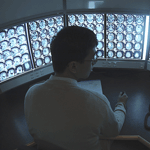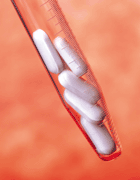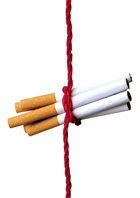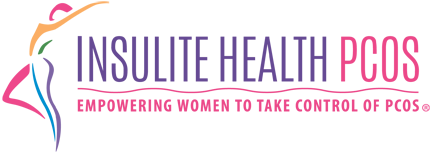How the Cardiovascular System Works and
What Can Go Wrong
 Heart disease is one of the biggest killers in the United States. But do you know if you’re at risk? And do you know what steps to take if you’re vulnerable?
Heart disease is one of the biggest killers in the United States. But do you know if you’re at risk? And do you know what steps to take if you’re vulnerable?
Even though most of the risk factors can be controlled, too many adults of both sexes still pursue a lifestyle of poor diet and lack of exercise that leads to weight gain and obesity. This, in turn, can cause damage to the cardiovascular system.
“Heart trouble” is a commonly used phrase. But many people don’t realize it refers to a number of different problems, depending on which part of the cardiovascular system is affected. Although the heart is a single organ, it is made up of several different parts:
Coronary arteries deliver oxygen-rich blood to the heart muscle.
The heart muscle pumps oxygenated blood out of the heart via the aortic artery to nourish every other organ of the body. The pulmonary artery carries blood to the lungs.
Valves, two on each side, direct blood flow in and out of the heart and among its four chambers, called the atria (upper) and ventricles (lower). The left atrium receives oxygenated blood from the lungs, while the right atrium receives blood from the body and contains the heart’s “natural pacemaker” called the sinoatrial node or sinus node, which keeps the heart beating regularly. The left ventricle pumps oxygenated blood around the body, while the right ventricle pumps blood to the lungs for fresh oxygen. The septum is a muscle down the center of the heart. It separates the right side-where blood returns from the body on its way to the lungs to be replenished with oxygen-from the left side, where oxygen-enriched blood is pumped out to the rest of the body. The pericardium is an outside sheath that covers and protects the heart muscle. The electrical system consists of neural pathways that deliver signals to keep the heart beating.
The heart is such a complex mechanism that numerous things can go wrong: Coronary artery disease refers to the build up of plaque, or fatty material, in the arteries on the heart’s surface, either narrowing them, in a condition called angina pectoris, or blocking them completely and causing a heart attack.
Heart muscle weakness can be caused by a number of factors. Long-standing and untreated high blood pressure (hypertension) can strain the heart muscle, forcing it to work harder to get blood into the arteries; a previous heart attack can reduce the amount of healthy heart tissue, interfering with the way the heart contracts; valve disease can diminish blood flow, which enlarges and weakens the various heart chambers; or a virus or other infection can affect the smooth running of the heart.
A septum thickened by disease can also interfere with blood flow within the heart, while the electrical system can go awry, with blocked or erratic signals interrupting normal muscle contraction, causing the heart muscle to beat too quickly or irregularly. These problems can lead to possible heart block, cardiac arrest, bradycardia, ventricular fibrillation, or chronic valvular disease.
Aspirin and Heart Health
 The American Heart Association recommends aspirin use for patients who have had a myocardial infarction (heart attack), unstable angina, ischemic stroke (caused by a blood clot) or transient ischemic attacks (TIAs) or “little strokes,” if not contraindicated. This recommendation is based on sound evidence from clinical trials showing that aspirin can have a blood-thinning effect and helps prevent the recurrence of such events as heart attack, hospitalization for recurrent angina, and second strokes. Studies show aspirin also helps prevent these events from occurring in individuals at high risk.
The American Heart Association recommends aspirin use for patients who have had a myocardial infarction (heart attack), unstable angina, ischemic stroke (caused by a blood clot) or transient ischemic attacks (TIAs) or “little strokes,” if not contraindicated. This recommendation is based on sound evidence from clinical trials showing that aspirin can have a blood-thinning effect and helps prevent the recurrence of such events as heart attack, hospitalization for recurrent angina, and second strokes. Studies show aspirin also helps prevent these events from occurring in individuals at high risk.
You should not start aspirin therapy without first consulting your physician. The risks and benefits of aspirin therapy vary for each person. If you’re taking aspirin and have to undergo even a simple surgical procedure or dental extraction, you must tell the surgeon or dentist about your aspirin dosage.
Combating Heart Disease
 Nearly all of us are born with immaculate arteries. But as soon as we learn how to feed ourselves, our arteries begin to go from clean to clogged. Taking better care of our cardiovascular system by watching our weight via a balanced diet and regular exercise will go a long way toward countering this effect. Adopting a healthier lifestyle, will add years to your life, as well as improving its quality.
Nearly all of us are born with immaculate arteries. But as soon as we learn how to feed ourselves, our arteries begin to go from clean to clogged. Taking better care of our cardiovascular system by watching our weight via a balanced diet and regular exercise will go a long way toward countering this effect. Adopting a healthier lifestyle, will add years to your life, as well as improving its quality.
If you pass this information on to your children, they, too, can take steps to avoid premature heart disease.
It isn’t just adult men who are especially prone to heart disease. Even pre-menopausal women, who were long considered resistant to “heart trouble.” should learn to reduce the risk factors that can cause damage to their cardiovascular systems later in life.
When it comes to heart disease, there are factors you can’t influence, like genetic vulnerability-we can’t choose our ancestors or alter our genes-and the aging process. But there are plenty more areas where the effectiveness of taking preventive action is documented by facts and figures.
 Stopping smoking is a prime example. More than 400,000 Americans die each year from smoking-related diseases according to the Centers for Disease Control and Prevention. Cigarette smokers are four times more likely to have heart attacks and develop cardiovascular disease than non-smokers. Men have a slightly higher risk than women. On average, lifetime smokers have a 50 percent chance of dying from a smoking-related disease. But quitting can quickly begin to nullify the risks-it’s never too late to stop. One year after quitting, your risk of heart disease drops by 50 percent, according to the World Health Organization (WHO). Within 15 years, a former smoker’s risk of dying from heart disease approaches that of a lifetime non-smoker.
Stopping smoking is a prime example. More than 400,000 Americans die each year from smoking-related diseases according to the Centers for Disease Control and Prevention. Cigarette smokers are four times more likely to have heart attacks and develop cardiovascular disease than non-smokers. Men have a slightly higher risk than women. On average, lifetime smokers have a 50 percent chance of dying from a smoking-related disease. But quitting can quickly begin to nullify the risks-it’s never too late to stop. One year after quitting, your risk of heart disease drops by 50 percent, according to the World Health Organization (WHO). Within 15 years, a former smoker’s risk of dying from heart disease approaches that of a lifetime non-smoker.
Lowering your LDL “bad” cholesterol has enormous benefits. Doctors and nutritionists have a wealth of information about low-cholesterol diets. Almost everyone who has a heart attack or undergoes bypass surgery is now given a statin, a type of cholesterol-lowering agent, regardless of his or her cholesterol level. The statin drugs that reduce cholesterol also reduce the level of C-Reactive Protein, a marker for inflammation of the arteries, which can lead to heart attack or stroke. Switching to low-cholesterol food is highly advisable.
Controlling Your Blood Pressure and getting it to normal levels will greatly reduce the risk of both stroke and heart attack by slowing down the formation of the arterial plaque that narrows the blood vessels everywhere in the body-especially in the heart, brain, kidneys, eyes, and legs.
Managing Your Blood Sugar is vital to avoiding Pre-Diabetes, which can lead to Type 2 Diabetes. (See Insulin Resistance, Diabetes and Heart Disease.) Although Type 2 Diabetes can be managed over a long life, almost 80 percent of diabetics eventually die from some form of heart or blood vessel disease.
Next Steps
- Take the PCOS Quiz! Get your score and assess your hormone health risks.
- Join our Facebook Sisterhood Group Pose your questions to this group of like-minded women. Get the answers to your questions and the support you need.
- Checkout the Hormone Reset. Guided Practices to eliminate anxiety, lose weight and boost energy.
We are committed to helping women reverse their symptoms of hormone imbalance – a major cause of excess weight gain, adult acne, unwanted facial hair, depression, anxiety, and heartbreaking female infertility.
©Insulite Health empowers women with hormone imbalance to transform their lives through a process of healing with the Natural Hormone Solution –a complete solution for helping women reverse the symptoms hormone imbalance..
